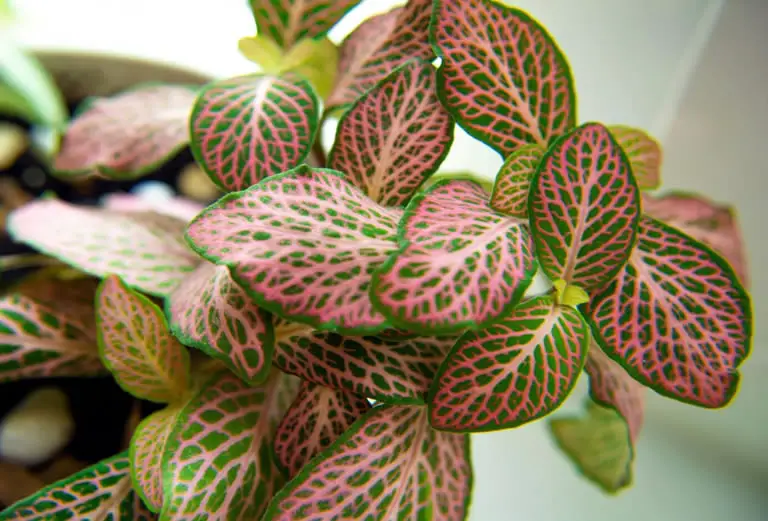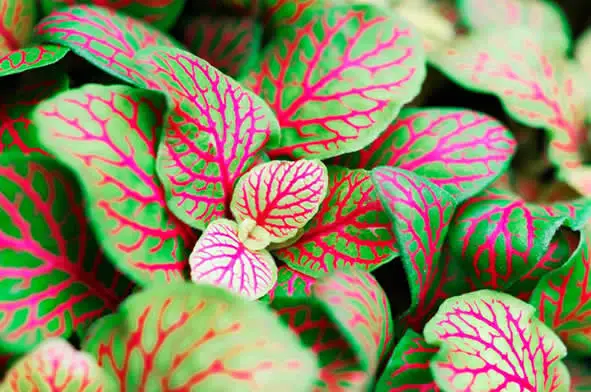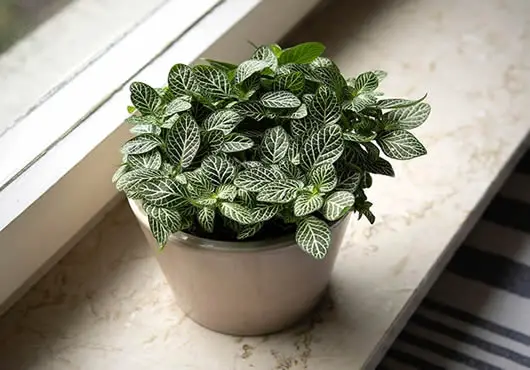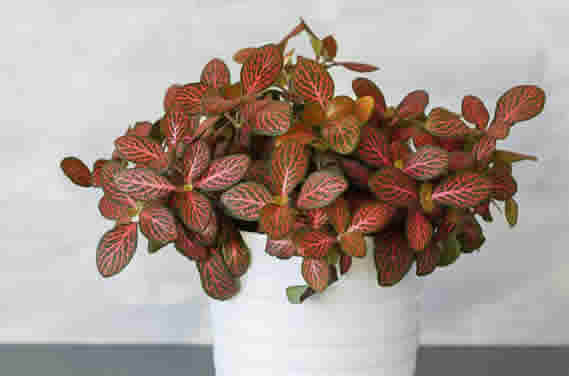Nerve Plant Care: How to Keep Fittonia Thriving With Color and Flair

The Nerve Plant (Fittonia albivenis) is a compact, vibrant houseplant known for its deeply veined leaves that come in pink, white, red, or green. It’s a favorite in terrariums and small spaces thanks to its low-growing habit and dramatic color. But it’s also a bit of a diva—prone to fainting when thirsty and quick to wilt in dry air.
Don’t worry—once you know its preferences, this showy little plant can be surprisingly easy to keep happy and lush.
Table of Contents
- Never Plant: A Bold Beauty from the Rainforest Floor
- Light Needs: Keep It Bright but Indirect
- Watering: Consistent Moisture Without the Soggy Soil
- Humidity and Temperature: Keep Things Cozy and Moist
- Fertilizer: Feeding for Lush, Colorful Growth
- Soil and Repotting: Airy, Moisture-Retentive Mixes Work Best
- Pruning and Pinching: Encouraging Fullness and Shape
- Best Spot in the Home: Where Fittonia Looks and Feels Great
- Seasonal Outdoor Placement: A Summer Vacation in the Shade
- Common Problems and Fixes
- Final Thoughts
Never Plant: A Bold Beauty from the Rainforest Floor
Fittonia albivenis, commonly known as the Nerve Plant, is a low-growing tropical plant native to the rainforests of Peru and other parts of South America.
It’s part of the Acanthaceae family and thrives in the warm, humid understory of the jungle, where it spreads as ground cover beneath the canopy.

The name “Nerve Plant” comes from the striking, contrasting veins that run through its leaves—usually in white, pink, or red.
It’s often used in terrariums and dish gardens for its small size, vibrant foliage, and humidity-loving nature.
Despite its delicate appearance and tendency to faint when thirsty, the Nerve Plant is surprisingly tough and quick to bounce back, which makes it a favorite for plant lovers who enjoy a little personality.
Light Needs: Keep It Bright but Indirect
Nerve Plants prefer bright, indirect light and thrive in filtered sun.
Direct light will bleach or burn the colorful leaves, while too little light causes leggy growth and dull color.
A north or east-facing window is ideal, or you can place it a few feet from a brighter window with a sheer curtain.
Watering: Consistent Moisture Without the Soggy Soil
This is a plant that hates to dry out completely.
Water when the top half-inch of soil starts to feel dry, and aim to keep the soil consistently moist—never bone dry and never soggy.
Fittonias are known to “faint” dramatically when thirsty, but they usually bounce back within hours of a good watering.
Use lukewarm, filtered water if your tap water is heavy in salts or chemicals.
Humidity and Temperature: Keep Things Cozy and Moist
Nerve Plants love humidity and prefer temperatures between 65°F and 80°F.
Dry air can quickly cause browning edges or crispy leaves.

To keep humidity high, mist daily, use a pebble tray, or house it near a humidifier.
Bathrooms and terrariums are ideal environments for this plant’s moisture needs.
Fertilizer: Feeding for Lush, Colorful Growth
Feed your Nerve Plant once a month in spring and summer with a balanced liquid houseplant fertilizer, diluted to half strength.
A fertilizer with an NPK ratio of 10-10-10 fertilizer such as this one, or 20-20-20 like this one. works well.
Avoid over-fertilizing, as Fittonias are sensitive and can show stress quickly.
No need to fertilize during fall or winter.
Soil and Repotting: Airy, Moisture-Retentive Mixes Work Best
Use a rich, well-draining potting mix—something with peat moss, perlite, and a little compost or coco coir for water retention.
These plants have small root systems, so you only need to repot every 2 to 3 years or when the roots begin to fill the pot.
Choose a container with drainage holes to prevent root rot.
Pruning and Pinching: Encouraging Fullness and Shape
Nerve Plants benefit from regular pinching to keep them full and bushy.
If stems start to stretch or get leggy, pinch them back just above a node.

You can also trim off faded leaves or stems that look sparse.
Pruning encourages branching and helps keep the compact, mounding look that makes this plant so appealing.
Consider using the cuttings for propagating new plants. You can find detailed instructions for doing that in the article Nerve Plant Propagation: How to Multiply Your Fittonia the Easy Way.
Best Spot in the Home: Where Fittonia Looks and Feels Great
Fittonias are perfect for bathrooms, kitchens, shelves, and terrariums where light is soft and humidity is high.
They’re ideal for smaller pots and tighter spaces, and their vibrant leaf patterns make them pop when grouped with simple green foliage. Avoid drafty windows and air vents that dry out the air.
Seasonal Outdoor Placement: A Summer Vacation in the Shade
While not suited to permanent outdoor life in most climates, Fittonias can enjoy time outside in summer as long as they’re shaded and protected.
Set them in a covered patio, under a tree canopy, or on a shady balcony where temperatures stay above 65°F.
Be sure to bring them back inside at the first sign of cool nights.
Common Problems and Fixes
Wilting leaves are almost always caused by dry soil
Fix it by watering thoroughly and regularly—this plant bounces back fast if you catch it early
Crispy edges usually mean dry air or low humidity
Fix it by misting more often, adding a pebble tray, or using a humidifier
Yellowing leaves may be a sign of overwatering
Fix it by letting the top layer of soil dry out and ensuring the pot drains properly
Faded leaf color often happens when the plant is getting too much light
Fix it by moving the plant out of direct sun and into a spot with softer, filtered light
Leggy stems usually mean the plant isn’t getting enough light or hasn’t been pinched back
Fix it by pruning regularly and increasing the light slightly, without adding direct sun
Final Thoughts
The Nerve Plant brings bold color, texture, and personality to any room—even if it can be a bit dramatic when thirsty.
Once you learn its rhythm and keep the humidity just right, it’s one of the most charming little houseplants you can grow.
Whether tucked into a terrarium or featured on a bathroom shelf, Fittonia adds a splash of tropical color that’s impossible to ignore.
Thanks for reading! I'm Michael — houseplant fanatic and your Pinterest plant guide.
Follow me on Pinterest for fresh updates 🌿



